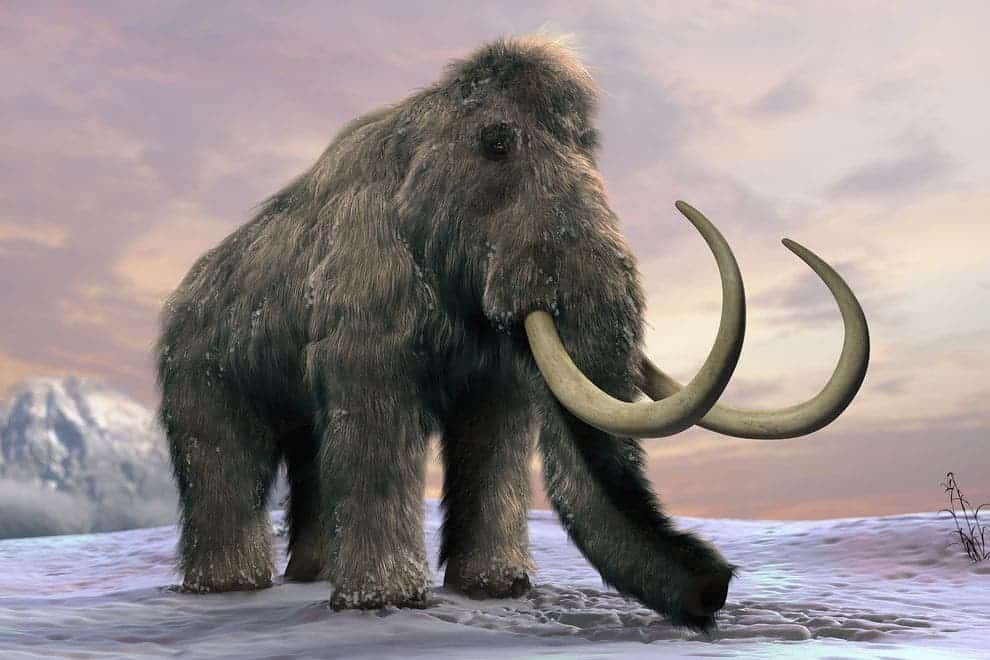A team at University of Chicago made the most comprehensive woolly mammoth genome sequencing ever. By comparing its genome with that of its distant cousins, the Asian and African elephants, the researchers were able to determine which are the mammoth’s specific genes. These were ran with libraries and repositories to identify what these do. We now know which of mammoth’s gene shaped its uncanny skull and small ears, how it got hair to cover all its body or how the mammoth adapted a special fat metabolism and cold coping mechanism. To test their findings, the researchers transplanted a mammoth gene into a human cell. The kidney cell produced new proteins which were tolerant to heat or cold, as suspected showing their other genetic determinations are also likely correct.

What the mammoth
This isn’t the first time a mammoth’s genome was sequenced, of course. However, these previous efforts were error-prone and yielded only limited results .This is natural after all, since we’re working with DNA from a creature which went extinct some 10,000 years ago. The last ice most likely killed off the mammoth which roamed the frigid tundra steppes of northern Asia, Europe and North America. On the bright side, the ice age helped keep mammoth specimens in the “freezer” helping preserve whole tissue and even mammoth blood. The cold, however, damages DNA and sequencing the genomic data can be a lot like retrieving data from a hard drive with “bad” sectors. You can fill in the gaps, but only so much.
Vincent Lynch, PhD, assistant professor of human genetics at the University of Chicago used new techniques to sequence the whole genomes of two woolly mammoths and three Asian elephants, which are the closest living relatives of the mammoth. The two genomes were then compared against each other. The genome of the African elephant, a more evolutionary distant relative of both species, was also added to the mix.
The researchers identified 1.4 million genetic variants unique to woolly mammoths, which caused changes in the proteins produced by 1,600 genes. Proteins are basically what signal physical growth, change and function. Thus, mammoth genes were identified that are involved in fat metabolism (including brown fat regulation), insulin signaling, skin and hair development (including genes associated with lighter hair color), temperature sensation and circadian clock biology. These are all highly important in helping the mammoth adapt to Arctic temperatures.
“This is by far the most comprehensive study to look at the genetic changes that make a woolly mammoth a woolly mammoth,” said study author Vincent Lynch, PhD, assistant professor of human genetics at the University of Chicago. “They are an excellent model to understand how morphological evolution works, because mammoths are so closely related to living elephants, which have none of the traits they had.”
To make sure they did their job right, the researchers used ancestral sequence reconstruction techniques to “resurrect” the mammoth version of one of these genes, TRPV3, then implanted it into a human kidney cell. The TRPV3 gene produced a protein that was less responsive to temperature than the modern elephant ancestral version. So it seems likely that TRPV3 was also important for mammoth cold tolerance. Findings appeared in Cell Reports.
Resurrecting a fallen beast
Naturally, the better the genome sequencing, the better the chances of a mammoth cloning working well. Some researchers think this is total nonsense and won’t even happen, but there are research groups around the world that are working on making the very first ancient creature resurrection. The scientific challenges are quite difficult to overcome, though. For instance, Harvard University researchers are now filling the gaps in poor mammoth genome sequences with elephant DNA. The better the genome, the better the odds that a live, functional mammoth might be born alive. But will it be a mammoth in the first place? It’s hard to tell.
“We can’t know with absolute certainty the effects of these genes unless someone resurrects a complete woolly mammoth, but we can try to infer by doing experiments in the laboratory,” Lynch said.
“Eventually we’ll be technically able to do it. But the question is: if you’re technically able to do something, should you do it?” he said. “I personally think no. Mammoths are extinct and the environment in which they lived has changed. There are many animals on the edge of extinction that we should be helping instead.”


